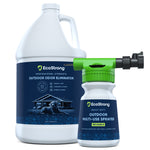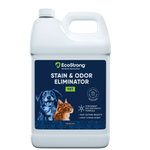We all want a well-behaved dog that doesn’t tear things up and is happy to go to the bathroom outside — Crate training creates a safe environment for your dog that teaches them responsibility and independence.
While many people view crates through the human lens of being “caged up,” dogs are naturally den animals and enjoy being in small cozy, enclosed places. It provides a sense of security and calms anxiety. We talked to Anna Flayton, senior dog trainer for PUPS -Pet Club in Chicago, for her advice on how to crate train your dog.
Step 1: Choose the Right Crate for Your Dog
“You want to get one that’s durable, comfortable, and flexible with whatever training you’re doing,” says Flayton. For dogs that prefer to sleep in the dark, she recommends kennel or airline crates (which are more enclosed), while wire crates work best for other dogs. It’s important, she notes, that you don’t buy a crate that is too big for your dog. “Depending on how big your dog is going to get, buy the right crate for their adult size,” she advises. “Then get a divider so you can build the space and grant them more and more space.”
Wire Dog Crate
This wire dog crate has 2 doors , includes a free divider panel, durable dog tray, carrying handle, and “roller” feet to protect floors. This dog crate comes in six sizes and is a great option for all dogs.
Plastic Crate


Step 2: Establish the Proper Mindset
The more the dogs associate the crate with his house, his quiet space, the more they’ll ultimately enjoy hanging out in there, if you put the dog in the crate when they’re playing, then they’ll want to come back out and continue to play. But if wait and introduce it when they’re calm, they will likely view it as a place of rest. Start by bringing them in for 10 minutes at a time and work your way up from there.
Step 3: Determine How Your Dog Will Be Most Comfortable
Some people use dog beds or blankets to create a comfy environment, Once again, it’s trial and error. Depending on the dog you have, they may tear a dog bed apart or they may use it to pee on. Make sure your dog bedding and crate are free of all odor, pee, feces and vomit. Ecostrong stain and odor eliminator is ideal for this, a 100 % natural bio-enzymatic product, that eats the odor at the source and eliminates all odors for good.
Step 4: Give the Dog a Treat After They Go Into the Crate
Once again, positive, positive and more positive reinforcement is rule one. One of Try giving the dog his favorite toy- we love puffin-products or a natural bone. This way when they’re hanging out in the crate, they have something that stimulates them, keeps them from being bored. It gets the dog used to being in the crate for a longer period of time, while also associating it with an enjoyable activity.
Step 5: Keep an Eye on the Time
Your dog needs time outside the crate to play, eat, and use the bathroom. Dogs don’t want to soil where they sleep, but if there’s too long of a stretch without a walk, they might end up doing so. Again, accidents will happen, so have your Ecostrong stain and odor eliminator ready for all those OOPS ! In fact, I use this everywhere it works so well, bathrooms (works fantastic for all those gross human misses), kitchen disposal, dishwasher, floors, amazing on grout – let the bio enzymes eat the grime for you, and laundry is a god send, smelly dog beds, sweaty, dirty human clothes and even baby spit up.
Step 6: Play Crate Games
The dog shouldn’t see the crate as a negative place, on the contrary it should be quite the opposite, incorporate the crate into fun games where the pup goes in and out of the open crate at their own will. You can throw the ball in the crate when playing fetch or hide treats inside for the dog to find, this just to add extra fun.
Step 7: Keep Your Dog “Naked”
Dogs should never, ever have collars or tags or anything on when they are in the crate. If the tag gets caught in the crate the dog could strangle.
Step 8: Set Your Dog Up for Success
Step 9: Be Patient
Prepare yourself for at least six months of training. There will be ups and downs since dogs aren’t linear learners, but success will come, says Flayton. “Even when it feels like you’re banging your head against a wall, as long as you stay calm and consistent in your methodology, your dog will eventually look for the reward and you’ll have the opportunity to reward them.”


















